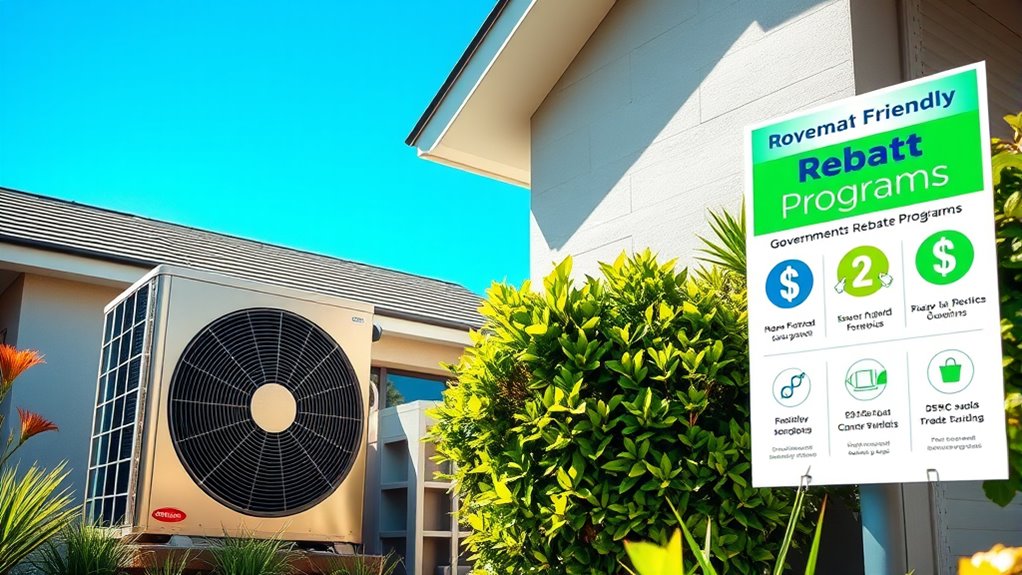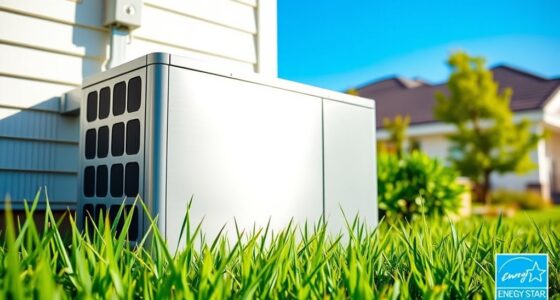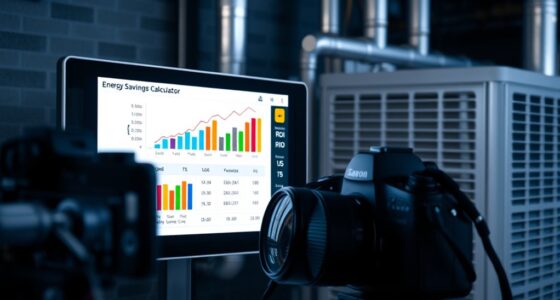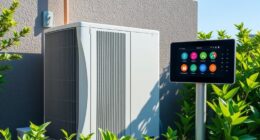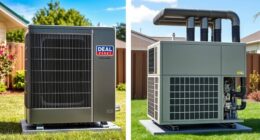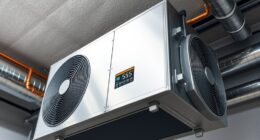You can take advantage of federal tax credits covering 30% of heat pump costs, up to $2,000, if your system qualifies as ENERGY STAR compliant. Plus, many state and utility rebates can add hundreds to thousands of dollars, especially for low- and moderate-income households. Combining these incentives and upgrades like insulation or electrical improvements can maximize your savings. Keep in mind the qualification requirements and documentation needed—if you explore further, you’ll see how to make the most of these programs.
Key Takeaways
- Federal tax credits cover 30% of heat pump costs, up to $2,000, for ENERGY STAR certified systems.
- State and utility rebates vary, often favoring low- and moderate-income households, with up to several thousand dollars available.
- Incentives are valid through 2032, requiring adherence to ENERGY STAR or CEE standards and proper documentation.
- Combining federal, state, and utility incentives can significantly reduce overall installation costs.
- Support services are available to help navigate application processes and ensure timely, compliant rebate claims.
Overview of Federal and State Incentive Programs
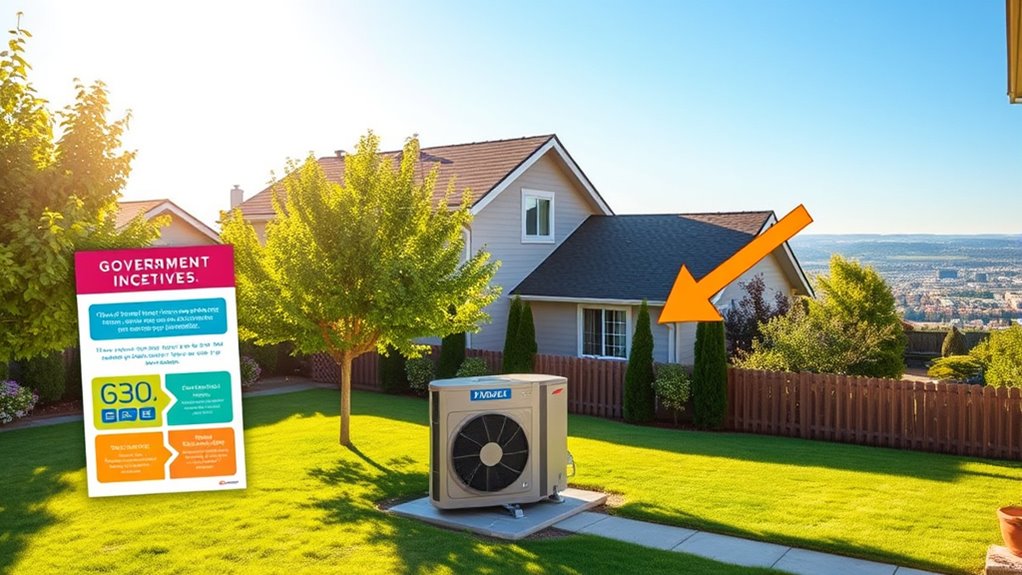
Federal and state governments offer a variety of incentives to make heat pump installations more affordable. The federal tax credits, through the Inflation Reduction Act, cover 30% of the heat pump cost, up to $2,000, for eligible systems meeting ENERGY STAR standards. Many states and utility companies also provide rebates, which can range from a few hundred to several thousand dollars, depending on your location and household income. Incentive programs often require that heat pumps meet energy efficiency standards set by the Consortium for Energy Efficiency or ENERGY STAR. Higher rebates are typically available for low- and moderate-income households. These programs are available through 2032 and are designed to encourage the adoption of high-efficiency, renewable energy-compatible heat pump systems, reducing overall costs for homeowners. Wave and wind are natural forces that influence the efficiency and placement of heat pumps, especially in coastal areas. Additionally, understanding the energy efficiency standards can help homeowners maximize their rebate benefits and ensure optimal system performance. Staying informed about technological advancements in heat pump design can also contribute to better efficiency and eligibility for incentives.
How to Qualify for Tax Credits and Rebates
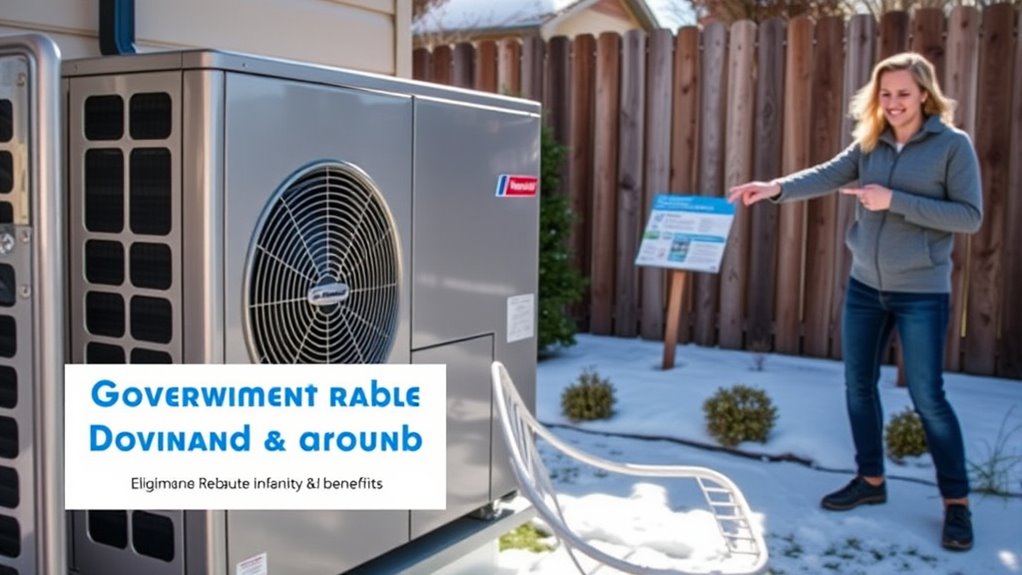
To qualify for tax credits and rebates, you need to make certain your heat pump meets specific efficiency standards and documentation requirements. Verify your system has the ENERGY STAR Most Efficient certification and complies with efficiency standards set by the Consortium for Energy Efficiency. Rebate programs often require installation by a qualified contractor and proof of compliance, such as receipts and certification documents. Your heat pump must be installed in your primary residence within the eligible tax year to claim these incentives. Additionally, upgrading related home components like electrical panels or insulation can improve your eligibility and maximize benefits. Keep detailed records of purchase costs, efficiency ratings, and installation dates, as you’ll need these documents to substantiate your claims for tax credits and rebates. Ensuring your system’s efficiency standards are met can significantly influence your eligibility for incentives. Being aware of program application procedures and deadlines can help streamline the process and prevent delays in receiving benefits. Moreover, energy efficiency improvements in your home can further enhance your chances of qualifying for these incentives and contribute to long-term savings. Staying informed about latest rebate programs can help you take advantage of new incentives as they become available. Furthermore, understanding retirement planning strategies can help you better prepare financially for future home improvements or unexpected expenses.
Details on Heat Pump and Water Heater Incentives
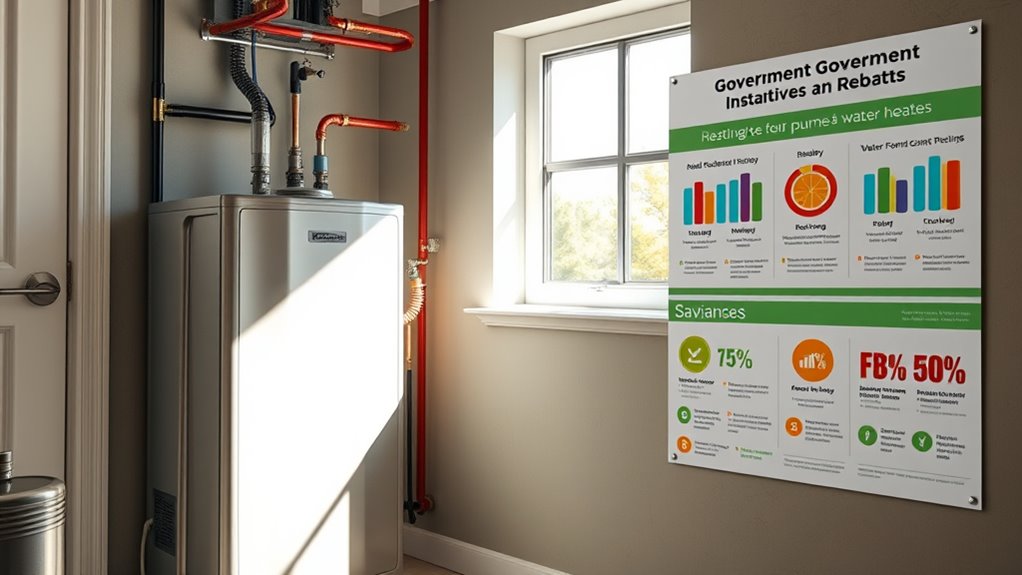
By installing high-efficiency heat pumps and water heaters that meet ENERGY STAR Most Efficient standards, you can access significant financial incentives. The federal tax credit covers 30% of installation costs up to $2,000 for heat pumps, while water heater incentives can reach $1,750 for low-income households and $875 for moderate-income households. Many rebate programs allow incentives stacking, reducing your upfront costs further. To claim these benefits, verify your equipment qualifies under energy efficiency standards and submit proper documentation, including IRS Forms. Staying informed about program eligibility can help maximize your savings and ensure you meet all requirements. Additionally, understanding rebate application processes can streamline your claim submission and expedite funding.
Benefits of Combining Incentives and Upgrades
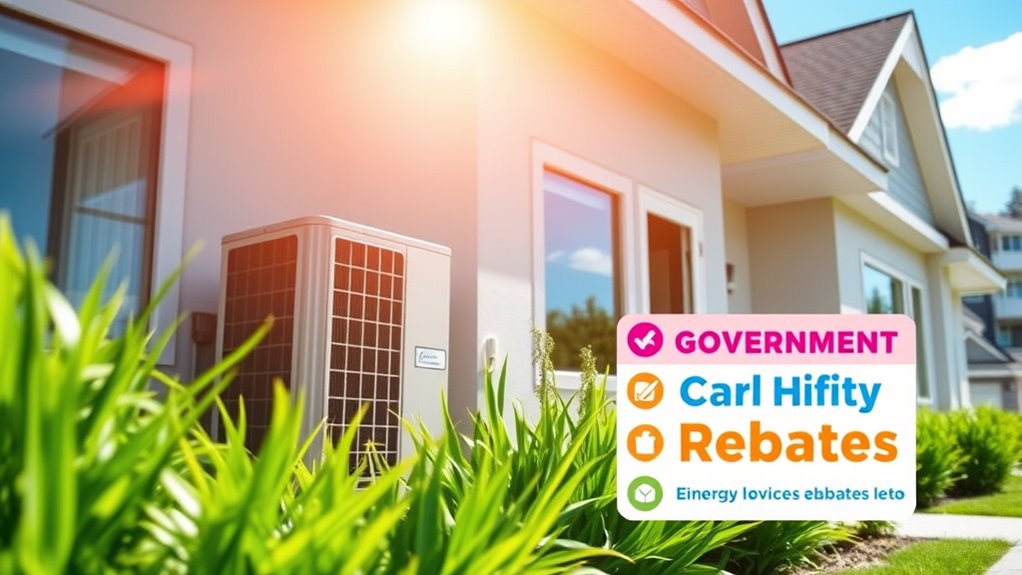
Combining incentives and home upgrades can dramatically lower your overall costs and boost energy efficiency. By stacking rebates and tax credits, like federal incentives up to $2,000 and state or utility rebates, you maximize cost savings on your heat pump installation. Upgrading home insulation, electrical panels, and air sealing alongside your heat pump can improve home efficiency and increase your eligibility for additional energy incentives. Properly coordinating these upgrades and incentives through qualified contractors ensures you fully benefit from multiple rebates—sometimes up to $8,000—and tax credits. This approach not only reduces your installation costs but also results in long-term financial benefits through lower energy bills. Planning carefully and documenting your upgrades is essential to maximize the combined benefits for your home. Additionally, incorporating home organization strategies can streamline the upgrade process and help maintain a clutter-free environment during renovation projects. Being aware of available energy-efficient technologies can further enhance your upgrades and savings over time. Understanding the potential security vulnerabilities related to new payment technologies can help you implement additional safeguards during your upgrade process, ensuring a secure environment. Recognizing the importance of federal and state incentives can also motivate homeowners to pursue comprehensive upgrades for maximum savings.
Steps to Apply and Maximize Your Savings
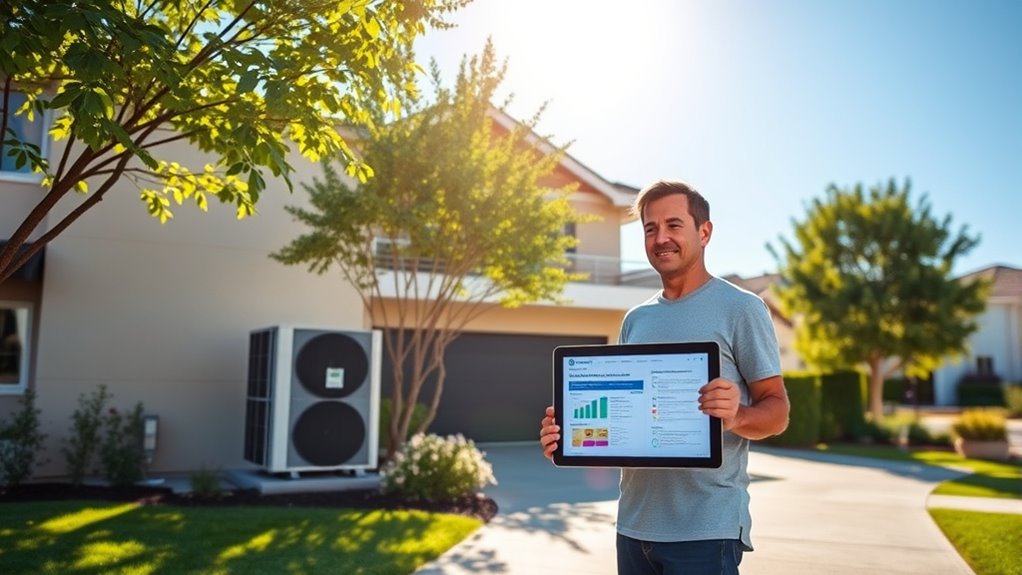
Getting the most out of your heat pump rebates and incentives requires careful planning and accurate application. Start by collecting all necessary documentation, including proof of purchase, installation receipts, and efficiency certifications, to guarantee you qualify for incentives. Complete IRS Form 5695 to claim federal tax credits, making sure to include the Product Identification Number (PIN) from the manufacturer. Verify your heat pump meets ENERGY STAR Most Efficient standards and any additional program guidelines. Work with qualified contractors to confirm the installation qualifies for rebates and adheres to all rules. Keep an eye on incentive caps, combined rebate options, and application deadlines to maximize savings. Staying organized and informed helps you navigate the rebate program efficiently and get the best value for your energy efficiency upgrade. Understanding the significance of spiritual symbolism can also inspire a thoughtful approach to your investment, reflecting a deeper appreciation for transformation and renewal, which aligns with the goals of energy efficiency improvements. Additionally, being aware of crochet styles for locs can inspire creative ideas for personal expression during your home upgrade process, making the experience both functional and enjoyable. Incorporating mindfulness techniques such as deep breathing exercises can help you stay calm and focused throughout the application process, reducing stress and improving decision-making. Exploring support hours for technical assistance can ensure you receive timely help if you encounter any issues during your rebate application.
Frequently Asked Questions
Is There a Federal Tax Credit for Installing a Heat Pump?
Yes, you can get a federal tax credit for installing a qualifying high-efficiency heat pump. This credit covers 30% of your installation costs, up to $2,000, and applies to your primary residence. To claim it, you’ll need to meet specific efficiency standards and file IRS Form 5695. Keep in mind, the credit’s available through 2032, but phased reductions start after that.
What Is the $8000 Inflation Reduction Act Rebate?
The $8,000 rebate under the Inflation Reduction Act helps low- to moderate-income households cover the costs of installing qualifying heat pumps. You need to meet income requirements, and the rebate is administered through your state energy office or utility programs. It’s designed to make energy-efficient upgrades more affordable, and you can combine it with other incentives. Make sure to use approved contractors to maximize your savings.
How Do You Qualify for the Inflation Reduction Act Heat Pump?
Getting in on this opportunity is a breeze if you know the ropes. To qualify for the Inflation Reduction Act heat pump incentives, make sure your system meets high-efficiency standards like ENERGY STAR Most Efficient. Install it in your primary residence within the eligible tax year, and keep all purchase and installation records. Obtain a Product ID Number, and you’re well on your way to saving big on your energy bills.
What Is the Average Cost of a Heat Pump Installation?
You’re probably wondering about the cost of installing a heat pump. On average, expect to pay between $3,500 and $7,000 for a standard central system, with higher-end models reaching up to $15,000. Mini-split systems typically cost $2,000 to $8,000, while geothermal options can be $10,000 to $30,000. Remember, additional expenses like permits or upgrades can add to your total.
Conclusion
By taking advantage of government incentives and rebates, you can turn your heat pump upgrade into a rewarding journey, like finding a hidden treasure chest. With the right knowledge and steps, you’ll save money while making your home more energy-efficient. Don’t wait for the wind to change—seize these opportunities now and watch your savings grow like a flourishing garden. Your smarter, greener home is just a few steps away!
